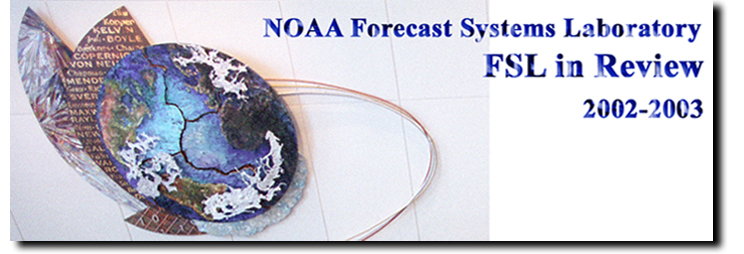
|
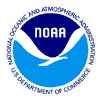
Cover/Title Page
Organizational Chart
Office of the Director
Office of Administration
and Research
Information and
Technology Services
Forecast Research
Division
Demonstration Division
Systems Development
Division
Aviation Division
Modernization Division
International Division
Publications/
Subscriptions
Acronyms and Terms
Figures Listing

Contact the Editor
Nita Fullerton
Web Design:
Will von Dauster
John Osborn
Best Viewed With
Internet Explorer
|

|
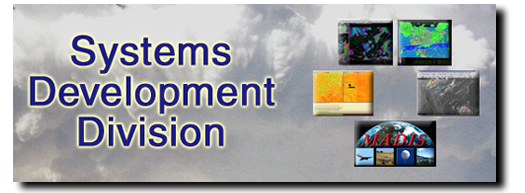
U. Herbert Grote, Chief
(Supervisory Electronics Engineer)
(303-497-6110)
Web Homepage: http://www-sdd.fsl.noaa.gov/
Michael F. Barth, Computer Specialist/Technical Advisory, 303-497-6589
C. Deanne Bengston, Secretary (OA), 303-497-6258
Michael R. Biere, Systems Analyst, 303-497-3783
Darien L. Davis, Computer Specialist/Technical Advisory, 303-497-6347
James W. Fluke, Program Analyst, 303-497-3050
Chris Golden, Computer Specialist, (no local phone) 413-586-6137
Richard T. Jesuroga, Physical Scientist, Chief, Dissemination Systems Branch, 303-497-6936
Xiangbao Jing, Visiting Scientist, 303-497-6112
Philip A. McDonald, Research Associate, 303-497-6055
Patricia A. Miller, Mathematician/Lead, Scientific Applications Group, 303-497-6365
Gerard J. Murray, Computer Specialist, (no local phone) 207-799-3202
John C. Osborn, Technical Communications Specialist, 303-497-6511
James E. Ramer, Meteorologist, 303-497-6341
Wilfred G. von Dauster, Visual Information Specialist, 303-497-5392
Joseph S. Wakefield, Meteorologist/Chief, Advanced Display Systems Branch, 303-497-6053
Susan M. Williams, Computer Specialist, 303-497-5721
J. Randall Wood, Systems Administrator, 303-497-3981
(The above roster, current when document is published, includes government,
cooperative agreement, and commercial affiliate staff.)
Address: NOAA Forecast Systems Laboratory – Mail Code: FS4
David Skaggs Research Center
325 Broadway
Boulder, Colorado 80305-3328
Objectives
The Systems Development Division performs exploratory development of advanced system concepts and technology for meteorological display systems, and
works closely with other divisions in transferring these into operations. Past explorations have included investigation of new techniques for user interfaces,
data display, system architectures, and software design and programming. The most recent exploratory work includes the use of Linux for meteorological
workstation development, interactive 3D data visualization, and graphic tool development for remote collaboration. SDD develops operational prototype
systems using these new techniques and technologies, and performs limited operational evaluation and testing of these systems. This division collaborates
with other FSL groups to extend these prototype systems and to incorporate capabilities developed in other divisions to meet the operational needs of
forecasters. Customers of these systems are domestic agencies such as the National Weather Service (NWS) and the U.S. Air Force (USAF), and
international organizations such the Taiwan Central Weather Bureau (CWB) and the Korean Meteorological Administration (KMA).
Another focus is the development of scientific applications for these meteorological display systems. A key activity is the development of advanced analysis
and quality control techniques for real-time observational data. The objective is to provide real-time observations, dependable quality control information,
and the necessary tools to access and view the data. The Quality Control and Monitoring System (QCMS) provides users and suppliers of hydrometeorological
observations with readily available quality control statistics. Two surface assimilation systems, the MAPS Surface Analysis System (MSAS) and the Rapid
Update Cycle Surface Assimilation System (RSAS), provide direct measurements of surface conditions and give crucial indicators of potential for severe
weather. In addition, the Meteorological Assimilation Data Ingest System (MADIS) provides quality-controlled observations and data access software to
university and government data assimilation researchers.
FSL's continuing support to AWIPS includes an exploratory development project called FX-Collaborate (FXC) which provides interactive features such as
drawing and annotation tools, a chatroom, and a capability for sharing local datasets between sites. FXC applications include weather forecast coordination
between offices, classroom training, briefings from NWS to other government agencies, field experiment support, and research coordination.
The division comprises three branches and one group:
Advanced Systems Development Branch – Designs and develops interactive weather display systems for operational use
and prototype systems for operational demonstration.
Scientific Applications Branch – Develops and implements scientific software systems designed to improve weather forecasting
by taking advantage of opportunities offered by recent advances in meteorological observations and information systems.
System Evaluation and Support Branch – Provides software testing, configuration management, and support services to the
division that include staging of major new systems and assisting project leaders with their data and display needs.
NWS Projects Group – Conducts research and develops technology for the exchange of critical weather information among
the NWS offices and between the NWS and the community.
Advanced Systems Development Branch
Darien Davis, Chief
Objectives
The Advanced Systems Development Branch designs and develops software that enables weather forecasters to display and interpret meteorological data,
and efficiently monitor and control the functions of ingest and display systems. State-of-the-art hardware and software technology is explored while also
supporting operational National Weather Service (NWS) systems.
Accomplishments
FX-Advanced/AWIPS
During 2002, work continued, in cooperation with the NWS, on the D2D meteorological display and text components of the AWIPS Weather Forecast
Office (WFO) system. AWIPS Builds 5.2.1 and 5.2.2 and Operational Build 1 (OB1) were all addressed, as follows.
Build 5.2.1 was installed at most NWS field offices in the summer. Key new features developed by FSL include:
- High-resolution soundings from NWS forecast models are available to support forecast operations. Dynamic maps show the location of available soundings.
- A window-capture feature allows users to save images of AWIPS displays for use in publications or on Webpages.
- Some higher-resolution radar imagery is now available.
The general field deployment of Build 5.2.2 was underway at the end of 2002, with the following new features:
- Pilot report plots are available, categorized by hazard (e.g., icing) and level (e.g., 18,000 – 26,000 ft).
- GOES soundings, similar to model soundings in Build 5.2.1, are processed and made available for display.
- Dynamic analysis and contouring of observations makes it easier to visualize mesonet or other point data.
- Location, size, and resolution of the MSAS domain are under site control; sites include Alaska and Puerto Rico.
- Units conversion and sunrise/sunset tools are available.
- Ensemble grid forecasts can be viewed on AWIPS.
- A new Variable versus Height mode is available for examining model data.
The bulk of FSL's work on OB1 was also completed, with the following new features:
- Local profilers and rawinsondes can be processed by the LDAD function.
- POES (polar orbiting environmental satellite) soundings are added to the list of soundings available for display.
- MDCRS (automated aircraft reports) are processed, offering availability/plan-view plots and ascent/descent soundings.
- The radar product generator for NEXRAD data is upgraded and offers several new radar products.
- A new meteogram feature allows viewing of common surface weather parameters in a stacked time series form.
Range Standardization and Automation (RSA) Program
As part of the Air Force Range Standardization and Automation (RSA) project, FSL is working with Lockheed Martin to provide an AWIPS-like weather
workstation supporting space launch operations. Initial work included the addition of several local datasets to the system. This work, based on AWIPS
Build 5.1.2, was delivered to Lockheed Martin in early 2002 and they performed an acceptance test with the Air Force at the Western Range (Vandenberg
AFB) in June. The system was delivered to the Eastern Range (Cape Canaveral) in July. Development work on an AWIPS Build 5.2.2-based upgrade was
nearly complete at the end of the year. Enhancements include the addition of a text subsystem, additional datasets, and a tabular text display that allows
users to set thresholds on various parameters with colored highlights of observations exceeding the limits.
A proof-of-concept version of the RSA 3D lightning display application was demonstrated at the AMS annual meeting and at the Range Operations Control
Center at Cape Canaveral. The specifications and requirements for the application were developed at a later meeting with Lockheed Martin, NASA, and FSL.
The prototype includes a modified and enhanced Vis5D to display LDAR (Lightning Detection and Ranging) and CGLSS (Cloud-to-Ground Lightning
Surveillance System) data, and development of a Tcl/Tk graphical user interface to control the application.
Other Projects
Linux – FSL continues to develop low-cost meteorological workstation capabilities. A Unix PC workstation developed over a decade ago is still
being used by the Taiwan Central Weather Bureau (CWB) to support their daily forecast operations. NWS fully embraces the use of Linux on low-cost
computers as its next generation of AWIPS processors. FSL continues to support this transition by exploring architectural improvements to accommodate
changes in technology and user requirements. Software was developed for the transition of field systems from Hewlett-Packard workstations and servers to
Linux PCs. Exploratory work includes the use of RAM disks and multicast technology for distributing data to workstations and making the system more
responsive in servicing user requests.
D3D – A high point was reached for D3D when six papers were presented at the annual American Meteorological Society's AWIPS session,
"Visualization: D3D Overview and Operational Use." These articles are available at http://d3d.fsl.noaa.gov. As a
proof-of-concept, a basic netCDF ingest method was added to the D3D version of Vis5D. This method was applied to high resolution mosaicked radar
data and demonstrated to the Taiwan Central Weather Bureau. With this project terminated in October 2002, only minimal support for existing users is
now provided.
Projections
FX-Advanced/AWIPS – Continuing support will be provided to the NWS during the fielding of AWIPS Build 5.2.2 and OB1, and development
and testing of Build OB2, targeted for field release beginning August 2003. Key development tasks will include accommodation of additional datasets
(high-density winds derived from GOES and several radar items), and quality control of text warning products released by forecasters. System performance
issues will continue to be addressed.
RSA – Software based on AWIPS Build 5.2.2 will be installed at the Ranges, and the branch will assist Lockheed Martin with installation and testing.
Development of additional datasets (notably, lightning/field mills and radar) will continue, and user training and documentation will be provided. A prototype
of the 3D lightning display application will be delivered in June 2003 and the operational version will be delivered in late September or October 2003.
Linux – FSL will continue to work toward the complete transition of AWIPS to the Linux/PC platform. During 2003, NWS hopes to replace all
remaining Hewlett-Packard workstations at field sites, and also augment data processing with the installation of two Linux data processors. FSL will continue
to assist with testing, develop software components, and explore architecture improvements.
Return to Top of Systems Development Division Section
Scientific Applications Branch
Patricia A. Miller, Chief
Objectives
The Scientific Applications Branch was established to develop and implement scientific software systems designed to improve weather forecasting by taking
advantage of opportunities offered by recent advances in meteorological observations and information systems. Support is provided for the AWIPS Mesoscale
Analysis and Prediction System (MAPS) Surface Assimilation System (MSAS), the National Centers for Environmental Prediction (NCEP) Rapid Update
Cycle (RUC) Surface Assimilation System (RSAS), and FSL's Meteorological Assimilation Data Ingest System (MADIS).
MSAS and RSAS
The MSAS and RSAS packages exploit the resolution of surface data by providing timely and detailed gridded fields, or analyses, of current surface data.
Surface analyses are critical to weather forecasting because they provide direct measurements of surface conditions, permit inference of conditions aloft,
and often give crucial indicators of the potential for severe weather. MSAS runs operationally at modernized NWS Weather Forecast Offices (WFOs) as
part of the AWIPS workstation. RSAS runs operationally at NCEP.
As surface analysis-only systems, MSAS and RSAS have the advantages of speed and closer fit to the observations. The systems produce one-level,
analysis-only grids and therefore require very few compute resources. Also, because the systems do not initialize a forecast model, their analysis is performed
on the actual surface terrain and not along a model topography. Hence, no model surface-to-station elevation extrapolations are required, all surface
observations may be used, and the fit to the observations is maximized. In addition, MSAS and RSAS incorporate elevation and potential temperature
differences in the correlation functions used to model the spatial correlation of the surface observations. The resulting functions help to take into account
physical blocking by mountainous terrain, and improve the representation of surface gradients.
Data typically ingested by MSAS and RSAS include standard METARs, Coastal Marine Automated Network (C-MAN) observations, surface reports from fixed
and drifting buoys, ships, and the NOAA Profiler and Ground-based GPS Networks, as well as surface observations from any available local mesonets.
Sophisticated quality control techniques are employed to help screen the surface observations. On AWIPS, the results of these techniques are passed to the
AWIPS Quality Control and Monitoring System (QCMS).
MADIS
MADIS was established at FSL for the purpose of supporting meteorological research and operations by sharing observations and observation-handling
technology with the greater meteorological community. Observations are essential to all areas of weather analysis and prediction. When viewed by trained
forecasters, for example, they provide a direct indication of the current atmospheric conditions and enable the forecasters to detect and follow weather
disturbances and to interpret critical detail about the formation and movement of major meteorological phenomena such as precipitation, severe storms,
and flight-level turbulence. Observations also form the "initial" conditions for data assimilation systems which produce the objective, numerical weather
prediction outputs heavily used in all areas of weather forecasting. Outside the world's major meteorological centers, however, access to these observations
has not always been readily available.
To fill this need, MADIS was established to make value-added data available from FSL's Central Facility with the goal of improving weather forecasting, by
providing support for data assimilation, numerical weather prediction, and other meteorological applications and uses.
Observations in the database are stored with a series of flags indicating the quality of the observation from a variety of perspectives (e.g., temporal consistency
and spatial consistency), or more precisely, a series of flags indicating the results of various quality control (QC) checks. Users of MADIS can then inspect the
flags and decide whether or not to ingest the observation.
MADIS also includes an Application Program Interface (API) that provides users with easy access to the observational information. The API allows each user to
specify station and observation types, as well as QC choices and domain and time boundaries. Many of the implementation details that arise in data ingest
programs are automatically performed. Users of the MADIS API, for example, can choose to have their wind data automatically rotated to a specified grid
projection and/or choose to have mandatory and significant levels from radiosonde data interleaved, sorted by descending pressure, and corrected for
hydrostatic consistency.
Accomplishments
MSAS and RSAS
During 2002, the Scientific Applications Branch continued to support the operational MSAS and RSAS versions on AWIPS and at NCEP.
MSAS – The major MSAS accomplishment in 2002 involved the initial development of software upgrades necessary to increase grid resolution and
vary domain boundaries for MSAS on the AWIPS system. These upgrades were delivered with AWIPS Build 5.2.2, and include the incorporation of a
customization script that allows each NWS WFO to specify the domain and resolution of their local MSAS systems, and also to specify the analysis grids
desired by their forecasters.
Although the domain and resolution parameters for MSAS are flexible, in previous AWIPS builds they have always been preset to cover the continental
United States (CONUS) with a 60-km analysis grid. Starting in AWIPS Build 5.2.2, however, each forecast office is able to modify the location, size, and
resolution of its local MSAS domain, and also to specify the model background utilized in the MSAS analyses, the level of the MSAS pressure reduction
(for example, 1500 m or sea level), and the time interval used in the MSAS pressure change analysis (for example, 1-hour or 3-hour pressure change).
(Figure 59 shows an MSAS sea-level pressure analysis on AWIPS.) Changes in the domain size are linked to changes in the grid resolution in such a way
as to minimize AWIPS impacts and guarantee that overall MSAS computational demands remain the same. For example, forecast offices can choose a
15-km, regional-scale domain, or a 60-km CONUS domain, but not a 15-km CONUS domain. Starting in Build 5.2.2, MSAS will also, for the first time,
supports domains outside the continental U.S., such as Alaska and Puerto Rico.
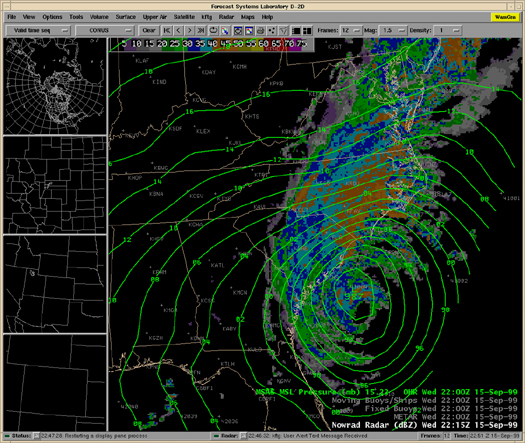
Figure 59. An AWIPS D2D screen showing an MSAS sea-level
pressure analysis overlaid on NOWRAD radar data.
Initial development was also completed on a new AWIPS software package to display observation QC results produced by MSAS for the AWIPS QCMS.
In addition to gridded surface analyses, MSAS regularly produces QC information for surface observations ingested into the AWIPS database. The information
includes the results of various QC checks applied to each individual observation as well as the hourly, daily, weekly, and monthly percentage of failure for
observations at each surface station, along with the errors associated with those failures. The current AWIPS system, however, provides no efficient or easy
access to this information. The new software package, called the QCMS Browser, will allow the MSAS QC information and statistics to be easily accessed
by NWS personnel for the purposes of 1) monitoring station performance, 2) locating persistent biases or failures in surface observations, 3) evaluating
observation/QC accuracy, and 4) subjectively overriding QC values.
RSAS – Significant upgrades to the RSAS system at NCEP were also completed. The new system both increases the RSAS horizontal resolution
to 15 km and extends its domain boundaries from Alaska in the north to Central America in the south, and also covers significantly more oceanic areas.
Additional RSAS upgrades include a new topography grid which has been improved to better match observation elevations and provide better treatment of
the model backgrounds. The system continues to provide hourly surface analyses, updated twice per hour (currently at 5 and 21 minutes past the hour), for
RSAS sea-level pressure, NWS sea-level pressure, altimeter, potential temperature, dew point temperature, dew point depression, 3-hour pressure change, and
surface winds. In addition, temperature, specific humidity, and equivalent potential temperature are provided as derived grids.
Operational implementation of the new RSAS version at NCEP was completed in 2002, along with the objective and subjective evaluations required for that
implementation. Subjective evaluations were conducted by the NWS Reno, Nevada, WFO and the NCEP Aviation Weather Center (AWC) with good results.
Forecasters at both NWS offices reported a significant improvement in the new 15-km system, stating, for example, that it "...provided detail not observable in
the previous 60-km system" and it was a "huge improvement" over the previous system. Objective evaluations also showed significant improvement, specifically
in the statistical fit of the grids to surface observations. The new RSAS also has the advantage of providing surface analyses over Alaska, Canada, Mexico, and
Central America.
Another accomplishment was the initial development of a Korean configuration of MSAS for the Korean Meteorological Administration (KMA) Forecaster's
Analysis System (FAS). Figure 60 shows an MSAS wind analysis over Korea.
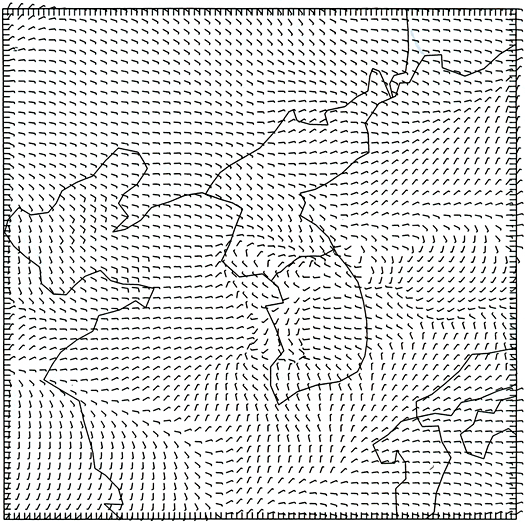
Figure 60. A 15-km MSAS wind analysis over Korea.
For more information on the customization options offered in the AWIPS Build 5.2.2 MSAS, refer to
http://www-sdd.fsl.noaa.gov/MSAS/localization.html. For more information on the new
RSAS version, see the Technical Procedures Bulletin at
http://www-sdd.fsl.noaa.gov/MSAS/rsas_tpb.html. For general information on both MSAS
and RSAS, see http://www-sdd.fsl.noaa.gov/MSAS/msas.html.
MADIS
MADIS now supports observation distributions to many government, research, and education institutions, as well as private companies. Organizations
already receiving MADIS datafeeds include NWS forecast offices, NCEP, the National Center for Atmospheric Research, the National Ocean Service, the
National Aeronautics and Space Administration's Marshall and Kennedy Space Flight Centers, the Massachusetts Institute of Technology Lincoln Laboratory,
and several universities, meteorological companies, and local government agencies. All MADIS subscribers have access to a reliable and easy-to-use database
containing real-time and archived datasets available via either ftp or by using Unidata's Local Data Manager (LDM) software. Nearly 50 subscribers were
added in 2002 alone.
Datasets supported by MADIS include standard maritime and land surface observations, including Meteorological Aviation Reports (METARs) and Surface
Aviation Observations (SAOs), along with surface mesonet observations from over 5000 stations provided by local, state, and federal agencies and private firms.
Upper-air observations include radiosonde observations, automated aircraft reports, wind profiler data from the NOAA Profiler Network (NPN), and also
non-NPN profiler data contributed by a number of different organizations including the Environmental Protection Agency, NOAA research laboratories, and
several major universities. The observations are acquired by the FSL Central Facility from a variety of sources including NOAAPORT, Aeronautical Radio
INCorporated (ARINC), and FSL's Demonstration Division NPN and ground-based Global Positioning System (GPS) data hubs. Mesonet data is decoded
and stored with software originally developed for the NWS Local Data Acquisition and Dissemination (LDAD) system. Major contributors to the mesonet
data stream are the NOAA Cooperative Institute for Regional Prediction at the University of Utah, which provides "MesoWest" data from the Cooperative
Mesonets in the Western United States, and the Boulder NWS Forecast Office, which provides mesonet data from the local Denver/Boulder area, and also
data from the Remote Automated Weather System (RAWS) network run by the National Interagency Fire Center. The mesonet dataset also includes
observations from volunteer citizen weather observers. Wherever possible, FSL uses redundant sources to maximize data availability. Although most of the
MADIS data is available without restrictions, aircraft and mesonet observations are proprietary to the data providers, and are subject to review and restriction
by those providers. Observations added in 2002 include over 2100 surface stations from 13 new mesonet providers and 60 profiler stations from about 30
multiagency providers. The latter dataset was added in cooperation with the Cooperating Agency Profiler (CAP) project in FSL's Demonstration Division, and
consists largely of 915-MHz boundary layer profilers. Figure 61 shows MADIS surface stations in and around the state of Iowa.
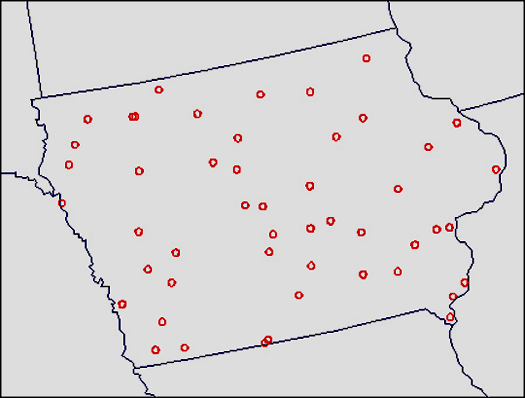
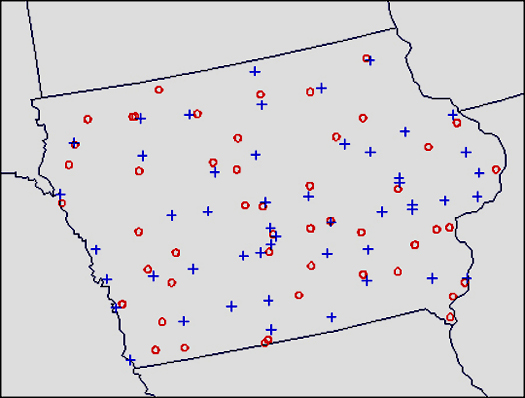
Figure 61. MADIS surface stations in and around the state of Iowa.
a, top) METAR surface stations; b, bottom) METAR surface stations
plotted with
mesonet stations. Circles indicate the METAR stations;
crosses the mesonet sites. Adding mesonet stations to the MADIS
database nearly triples the
surface observations available.
Observations from the NWS Cooperative Observer Program (CO-OP) network were also added to the MADIS database. NWS modernization efforts for the
CO-OP network included automating the collection and dissemination of temperature observations from over 100 stations in the New England area using
MADIS ingest, integration, quality control, and distribution capabilities. To support the NWS CO-OP modernization, a new CO-OP data hub was installed
in the FSL Central Facility to accept observations from the newly automated stations. Another addition to MADIS is an online archive that allows MADIS
users to easily access not only real-time observations but also saved observations. The archive is updated daily, and currently supports observations from
1 July 2001 to the present.
In 2002, MADIS also provided observation ingest, QC, and distribution support for the NOAA New England High-Resolution Temperature and Air
Quality (TAQ) Forecasting Pilot Project and for the International H2O Project (IHOP). MADIS observations were also provided to FSL's FX-Net and
Real-Time Verification System projects, and initial work was done to support the data assimilation system for the Weather Research and Forecasting (WRF)
model being developed by the operational and research meteorological communities.
The MADIS API was also updated in 2002 to provide support for the new observations in the MADIS database, and to improve processing capability and speed.
The API is easy to use, and is designed so that the underlying format of the database is completely invisible to the user, a design that also allows it to be easily
extended to other databases. In the current version of the API, support is provided for the FSL MADIS database, and also for the database used in the AWIPS
systems deployed at all NWS weather forecast offices.
The FSL MADIS database and API are freely available to interested parties in the meteorological community. MADIS data files are currently compatible with
AWIPS, and with the analysis software provided by the FSL Local Analysis and Prediction System (LAPS). For more information on MADIS, or to apply for a
MADIS datafeed, refer to http://www-sdd.fsl.noaa.gov/MADIS. Also available to NWS WFOs are instructions
on how to ingest and display MADIS datasets on their AWIPS systems. Figure 62 shows MADIS mesonet data as displayed on the Web.
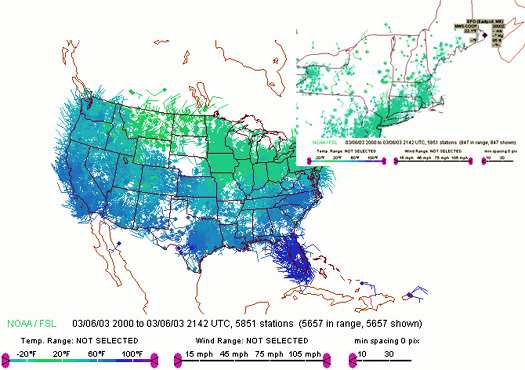
Figure 62. MADIS mesonet data as displayed on the Mesonet Webpage developed
by the Meteorological Applications Branch in the
Forecast Research Division.
Projections
During 2003, the Scientific Applications Branch will continue to support NWS in the operational implementation of the MSAS and RSAS systems.
Development of new capabilities, including a port of MSAS to a Korean domain, will also be completed.
New observations and capabilities will continue to be added to MADIS. Emphasis will be on increasing the number of observations in the mesonet
database, working with the FSL Demonstration Division to continue support for multiagency profiler data, and also completing a MADIS software
interface for the data ingest system of the community-developed Weather Research and Forecasting (WRF) model. Access to MADIS will continue
to be provided through the Web interface which provides the forms necessary to request real-time and archived data, and also allows users to download
the MADIS API, a "README" installation guide, documentation, and sample programs and data.
Return to Top of Systems Development Division Section
System Evaluation and Support Branch
Joseph S. Wakefield, Chief
Objectives
The System Evaluation and Support Branch provides testing, configuration management, and support services for the Systems Development Division.
Accomplishments
During 2002, development versions of AWIPS Builds 5.2.1, 5.2.2, and OB1 (Operational Build 1) were installed on FSL test systems. The development cycle for
each Build includes receipt of requirements from the National Weather Service (NWS), preparation and review of a design approach (including user interface
issues, when appropriate) for each requirement, development of the software and test plans, testing, refinement of the software, and system and user
documentation of the capabilities. Branch staff participate in the design/UI review and documentation tasks, and are responsible for developing and executing
test plans. The AWIPS test plans are also used at NWS and Northrop Grumman Information Technology (NGIT), the AWIPS prime contractor.
Similar support activities were carried out in 2002 for the RSA program and a customized AWIPS setup for the Johnson Spaceflight Center.
Numerous iterations of each version were tested, at several-week intervals, as development proceeded. In each case, two types of systems were tested — one
like the current NWS field installation, on mostly Hewlett Packard equipment, and one on an all-Linux set of machines, representing the expected future
AWIPS field architecture. FSL also maintains a field-release system, on which is installed an official copy of the AWIPS software. This is used to verify
documentation, investigate problems reported by users, and test patches.
A staff member serves as FSL's liaison to NGIT/NWS; his duties include tracking problems discovered during AWIPS testing, maintaining our local software
development environment, and keeping file versions synchronized between FSL and NGIT/NWS software repositories. Figure 63 illustrates the relation between
FSL's local directories and the official AWIPS repository, which is managed by PVCS.
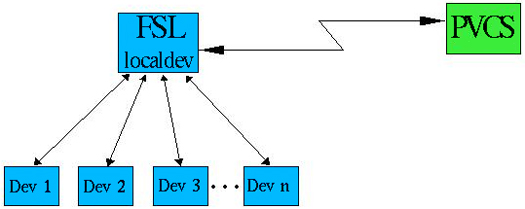
Figure 63. The official AWIPS software repository is managed by PVCS.
Since direct access to PVCS is slow, FSL
maintains a local copy of the
PVCS database, known as localdev. The code is built daily (both HP
and Linux
versions) at FSL during the development cycle. Developers
(Dev) access the files via soft links, locking a copy
when needed for
editing, then checking the revisions back into localdev. Daily changes
made at FSL are uploaded
to PVCS and changes made by NWS or
NGIT developers are downloaded to localdev. Since development
responsibilities
are well segregated, only rarely is there a merge
issue, where changes have been made in both locations.
As in past years, a branch member designed the layout of FSL's exhibit space at the 2002 American Meteorological Society's annual meeting. In addition to
coordinating the collection, shipping, and setup of all FSL equipment and furnishings, this enormous job included working with AMS and Orlando Convention
Center staff to ensure that power and data communication requirements were met.
Other tasks carried out during the past year concern systems administration functions, such as overseeing hardware installations and maintaining and updating
the utility and operating system software on computers used by the Systems Development Division and the Modernization Division. Most user machines in these
two divisions were upgraded to Red Hat Linux v7.2. In addition, new communications processors received from NGIT were installed in the FSL computer room
to replace older machines. The configuration files for these machines were maintained in order to deliver appropriate data to our test systems, as well as to
occasionally assist other FSL divisions by providing temporary data feeds for special projects, testing, etc.
Projections
During 2003, new software repositories will be created for AWIPS Operational Builds 2 and 3 (OB2 and OB3) development. Branch staff will support the
development, testing, and documentation of these Builds as described above, with OB2 testing occupying the first half of the year, and OB3 testing expected
to commence in early summer.
As new tasks are also completed for the RSA and JSC systems, test plans and testing will continue in support of those projects, as well.
The Red Hat 7.2 upgrade will be completed, and some exploratory work will be done with version 8.0; however, a general upgrade will be postponed until
the National Weather Service decides to move forward.
The AWIPS OB2 release will be tested early in the year, with OB3 testing planned to commence in the summer.
Some new hardware is expected from NWS to be added to FSL's field-release system, and the branch will upgrade the software as new AWIPS releases are
made available by NWS.
The usual coordination and planning will be performed to support FSL's exhibits at the American Meteorological Society annual meeting.
Return to Top of Systems Development Division Section
NWS Projects Group
Richard T. Jesuroga, Lead
Objectives
The NWS Projects Group conducts research and develops technology for the exchange of critical weather information between the National Weather
Service (NWS) offices and between the NWS and the community. A major area of focus is the FX-Collaborate (FXC), a Java application that supports
collaboration among users, distributed processing, and distributed databases. As an interactive meteorological display system, FXC provides users
access to a variety of meteorological data stored in remote AWIPS databases and on Web servers and local disks. Its strength is its ability to interlink a
number of remote systems to conduct real-time weather briefings, live meteorological discussions, or long distance learning through its collaborative
capabilities. During collaborative sessions, each user interactively performs hand analyses, drawing meteorological features that instantaneously appear
on other users' remote FXC systems.
Accomplishments
Several additional users chose FXC to meet their data display and coordination needs. These users include the USAF launch facilities at Vandenberg AFB
and Cape Canaveral Air Force Station/Kennedy Space Center, National Weather Service (NWS) Weather Forecast Offices (WFOs), and the NWS Southeast
River Forecast Center (RFC).
RSA – The RSA program was initiated by the Air Force to modernize and standardize the command and control infrastructure of the two
U.S. Space Launch facilities (ranges), located at Vandenberg Air Force Base, California, and Cape Canaveral Air Station, Florida. FSL released a new
version of FXC, also known as the Briefing Tool, to Lockheed Martin Mission Systems (the USAF contractor for RSA) for installation at the Western Range,
Vandenberg AFB, California. This RSA version includes several new features, such as the ability to export the AWIPS D2D screen, a totally revised slide
show user interface, and a large selection of slide templates. The system will be used at Vandenberg to give launch weather briefings. FSL also provided
user documentation and onsite training to forecasters.
NASA – FSL customized the FXC system for use at NASA in Houston, Texas. The requirement for worldwide coverage led to the addition of
new scales (geographic areas of interest) and more datasets. A number of minor enhancements to the drawing tool were made based on user feedback prior
to delivery. The system will be used to give weather briefings prior to Space Shuttle landings. Figure 64 shows an example of FXC use.
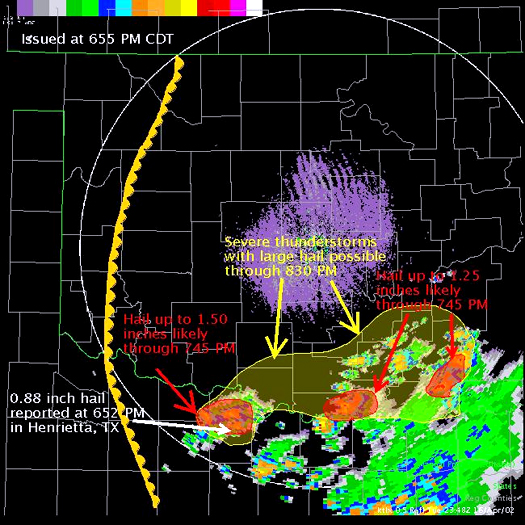
Figure 64. Example of how FXC can be used to annotate weather data displays.
Pictures such as this can be posted on WFO's Webpage for public information.
(Courtesy of NWS/WFO Norman, Oklahoma.)
National Digital Forecast Database (NDFD) – The FXC software was installed on over 30 workstations at WFOs in the NWS Central and Eastern
Regions to support intersite coordination of gridded forecast fields generated by the Graphical Forecast Editor (GFE). Dedicated FXC servers were installed at
Tulsa and Norman, Oklahoma to support two NDFD test clusters. FSL extended FXC's text chat capability to include audible alert, time stamp, chat history,
alert on text string(s) within message, selective disabling of alert, and color coding of messages. The system was successfully tested for several months. The test
helped to define NDFD collaboration requirements.
NWS/SERFC – A new version of FXC was installed at the Southeast RFC in Peachtree City, Georgia, and at Emergency Operations Centers in
several southeastern states. The system was used successfully during several potential flooding situations in the area last year, including Hurricane Lili, to
exchange crucial weather information with emergency operations officials.
NWS/WFO – Some support was given to forecast offices desiring to use FXC's extensive drawing capability to generate graphical products of
weather hazards for the offices' Webpages.
Projections
The focus of FXC work in 2003 is expected to cover the following areas:
Alaska – As a result of a demonstration of FXC last year to attendees at the Volcanic Ash Workshop in Anchorage, Alaska, it is anticipated that
FXC will be used in some capacity to collaborate on volcanic ash dispersion assessment and forecasting between staff members at the FAA Center Weather
Service Unit (CWSU) and WFO.
Flight Service Stations – FXC's capabilities are well suited for pilot weather briefings by Flight Service Stations. It is anticipated that a test of
this capability will be conducted to evaluate its potential use as a pilot briefing tool.
RFC – FSL will continue its evaluation of FXC in the NWS Southern Region to support flood coordination between the RFCs and emergency
operations personnel. Additional offices are also expected to use FXC to help prepare graphical weather products for inclusion in their Webpages.
Return to Top of Systems Development Division Section
|

|


